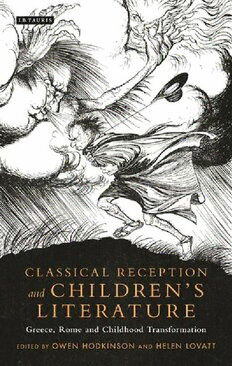
Classical Reception and Children’s Literature: Greece, Rome and Childhood Transformation PDF
356 Pages·2018·5.426 MB·English
Most books are stored in the elastic cloud where traffic is expensive. For this reason, we have a limit on daily download.
Preview Classical Reception and Children’s Literature: Greece, Rome and Childhood Transformation
Description:
Reception studies have transformed the classics. Many more literary and cultural texts are now regarded as ‘valid’ for classical study. And within this process of widening, children’s literature has in its turn emerged as being increasingly important. Books written for children now comprise one of the largest and most prominent bodies of texts to engage with the classical world, with an audience that constantly changes as it grows up. This innovative volume wrestles with that very characteristic of change which is so fundamental to children’s literature, showing how significant the classics, as well as classically-inspired fiction and verse, have been in tackling the adolescent challenges posed by metamorphosis. Chapters address such themes as the use made by C S Lewis, in The Horse and his Boy, of Apuleius’ The Golden Ass; how Ovidian myth frames the Narnia stories; classical ‘nonsense’ in Edward Lear; Pan as a powerful symbol of change in children’s literature, for instance in The Wind in the Willows; the transformative power of the Orpheus myth; and how works for children have handled the teaching of the classics.
See more
The list of books you might like
Most books are stored in the elastic cloud where traffic is expensive. For this reason, we have a limit on daily download.
